One of the number one questions I’m asked by either brand new or seasoned weavers is “Should I buy a larger loom?”
In this post I will take you through the main points to consider when you’re wondering whether a size upgrade is the right choice for you.
*This post contains affiliate links.
The first consideration is what type of loom we’re talking about. Most people who ask me are rigid heddle weavers. So I’ll cover rigid heddle looms first, specifically Ashford looms, as they have the largest sizes available.I often recommend my 24″ loom as a great starting point for a beginner who wants a decent, but not huge width. It is wide enough to weave smaller width items like scarves but just large enough to weave kitchen towels and bags.
You can, of course weave yardage to sew with (to make your own clothes and larger items) but that involves sewing panels together to make wider widths. Depending on the item you plan to sew, this may or may not work well.
Beyond the 24″, the next size up is the 32″ rigid heddle loom. The largest currently available is the 48″ rigid heddle loom.
When considering a larger loom, consider the following points:
- Do you have the physical space for a larger loom?
If you buy a rigid heddle loom 24″ (that is the size I have) or above, I would definitely recommend to also purchase a stand with it.
I personally would not enjoy using a larger loom trying to lean it on the edge of a table or similar, and I don’t think that this would allow you to maintain a beneficial weaving posture. A good posture is really important – even if you have no physical injuries or problems, know that you could develop problems long term through repetitive poor setup and practices. So a stand is well worth the investment.
But, this means that your loom will be free standing rather than packed away. Do you have a space where you can set up a loom of that size and leave it on the stand when finished? Or does your living space/s dictate that your loom would need to be packed away in between uses?
- What is your budget?
This is a pretty important consideration for most of us! Naturally, the larger your loom, the more it will cost. And not just the initial outlay for the loom, but addition tools or pieces that you wish to add along the way. Every time you buy a different sized heddle/reed, a pick up stick, a stick shuttle – these are all going to be larger to compliment and fit your loom and that will cost more.
Here are a couple of examples as a comparison. I’ll list the 24″ loom specifics as compared to the 48″. All prices are in US dollars.
24″ RHL and stand – $394 USD (you can sometimes find a combo deal of the loom and stand together for a slightly cheaper price).
24″ 10 dent reed/ heddle – $37.50
22″ stick shuttle – $7.50
48″ RHL and stand – $695
48″ 10 dent reed/heddle – $89
Uh huh, big price differences!
- What do you intend to weave?
Some new weavers don’t really consider this when purchasing. Not being familiar with the possibilities or not having used a loom before, it can be very difficult to know what items you will end up enjoying weaving. If you only intend to weave scarves and smaller items, why go to the expense of the largest loom?
On the other hand, you may find that your absolute favourite thing to weave is baby blankets or afghans, therefore making the larger loom well worth your consideration. What if you make the decision to buy a smaller loom but after a little experience find that you want something larger?
Well, the good news is that rigid heddle looms are easy to resell. If you have kept it in good condition, it should be easy to find an eager new weaver willing to take it off your hands for a fair price. You can then use this money to invest towards the larger one.
- How is your back?
Back or shoulder problems? Neck trouble? Then you need to consider carefully whether a larger loom is the right choice for you. A larger loom means a much wider reach with a shuttle.
As an example, I can sit very comfortably at my 24″ on it’s stand, extend each arm out to insert the stick shuttle and not have to move forward in my seat.
As someone who has a back injury and regular flare ups, if I had to lean forward or to the side every time I wanted to throw a pick, that would be a real problem for me. It would be a much greater strain on my body. I prefer to accept my limitations and be grateful that I am able to weave on the 24″ and plan my projects accordingly.
That brings me to the next related topic, the table or floor loom.
I’ve written a large number of articles on this topic, here is a list of those posts if you’re interested in researching more.
When I had my 8 shaft, 32″ table loom it was a little more difficult to weave on when I had it fully warped, but with the correct height adjustable chair, it was more than manageable. I still miss that loom, I sold it to make space and provide extra funds for my floor loom. I’ve since replaced it with a smaller 16″ table loom that I can use for teaching purposes – perfect!
Now that I have my Louet David 2, 35″ floor loom, even though it is the widest loom I have owned, it is a good fit for me width wise. It is wide enough to weave baby blankets and wide shawls.
Recently I wove yardage on it for my Clothtober project, which was a tunic for me and it worked out well. So, why is this loom not a problem for my back? Well, I always use a boat shuttle with this loom.
Because the tension is excellent, I can shoot my boat shuttle back and forth with ease. I am also seated on an adjustable piano bench and find that I develop a slight rocking motion as I get into the weaving rhythm. Although my shoulders do get a little sore if I put in a long weaving session, it is not excessive and generally my back is fine as long as I’m not in a dreaded flare up phase.
The action of throwing a boat shuttle is quite different to passing a stick shuttle. Yes, you an use a boat shuttle with a rigid heddle loom too, but I generally don’t because it can’t hold the same tension so I end up mostly passing the boat shuttle through anyway.
I should also add, if you do have a rigid heddle loom that is a little smaller than you would like, you always have the option of double width weaving. Although somewhat limited, it is a really terrific way to double the width of your fabric. I have two classes that teach you how to do this – Doubleweave Baby Blanket and Weaving with Two Heddles. I also have the Rainbow Lap Blanket, which is woven entirely on a Sampleit loom.
I certainly didn’t intend to write such an epic post when I sat down to address this topic today, but there is a lot more to be said about it than I realised! I hope my ramblings have been of use to you.
As always, leave me a comment with any questions or additional points you may have to add. I appreciate your input!
Until next time…
Happy Weaving!

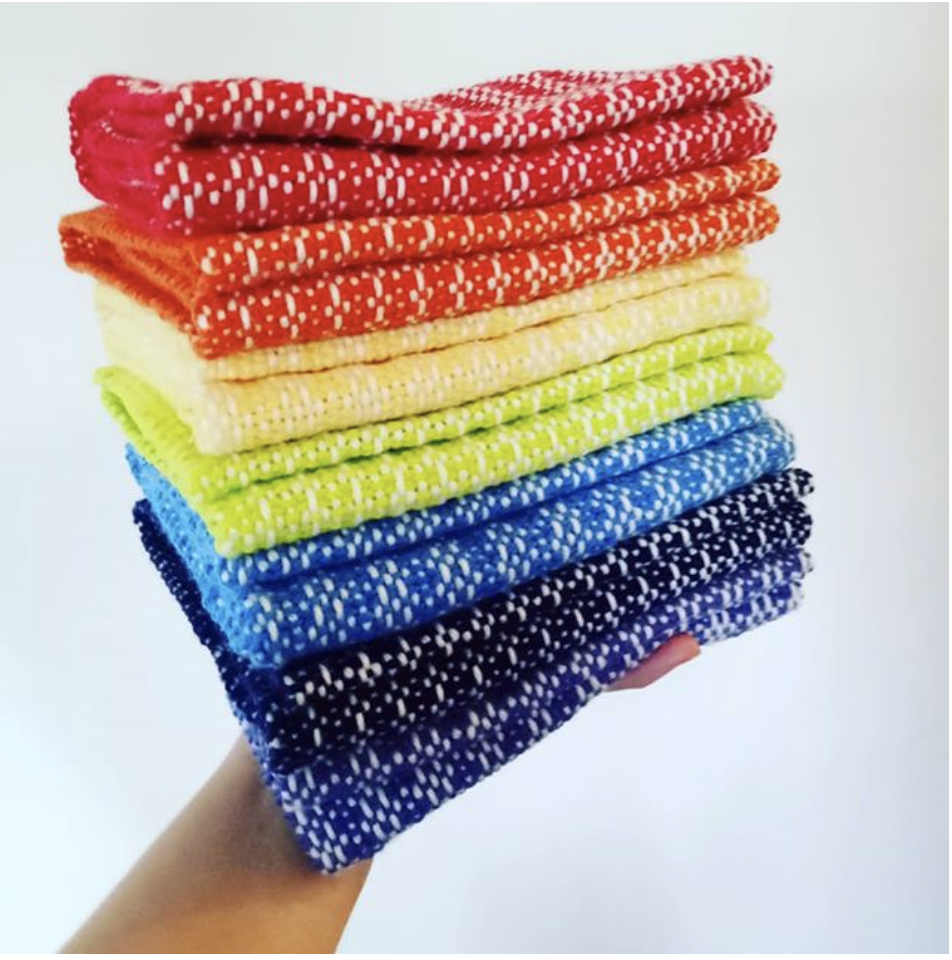
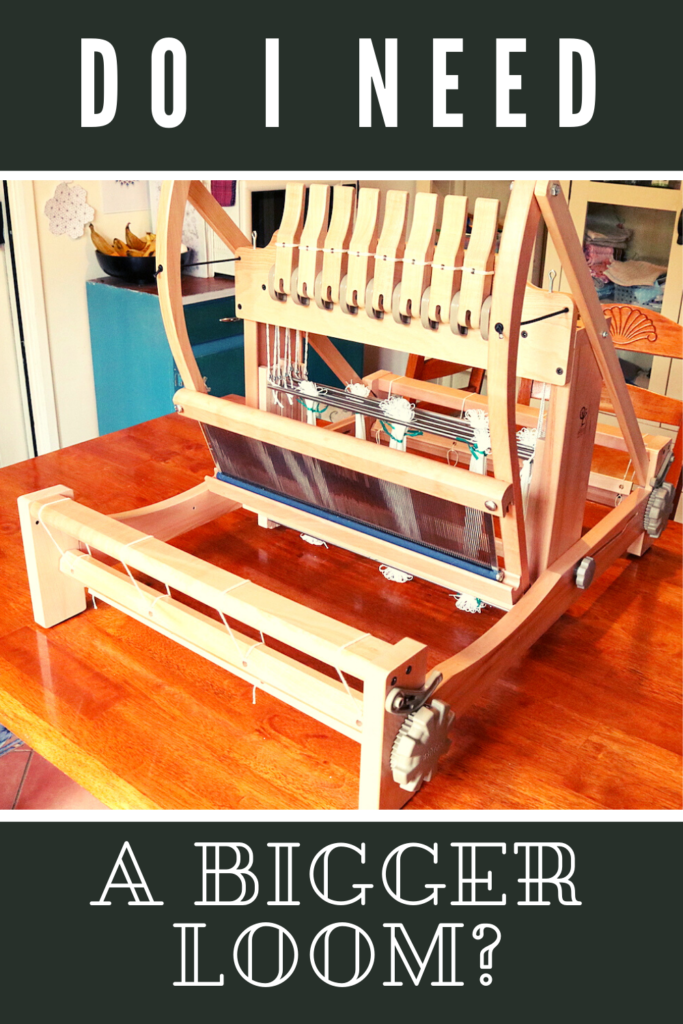
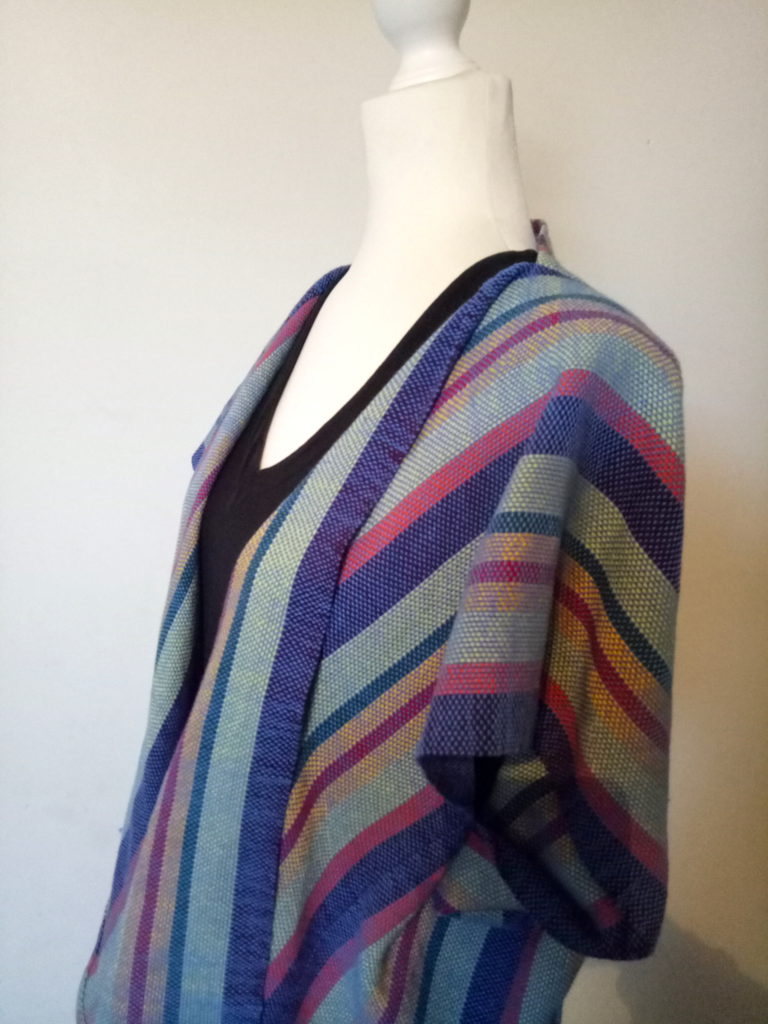

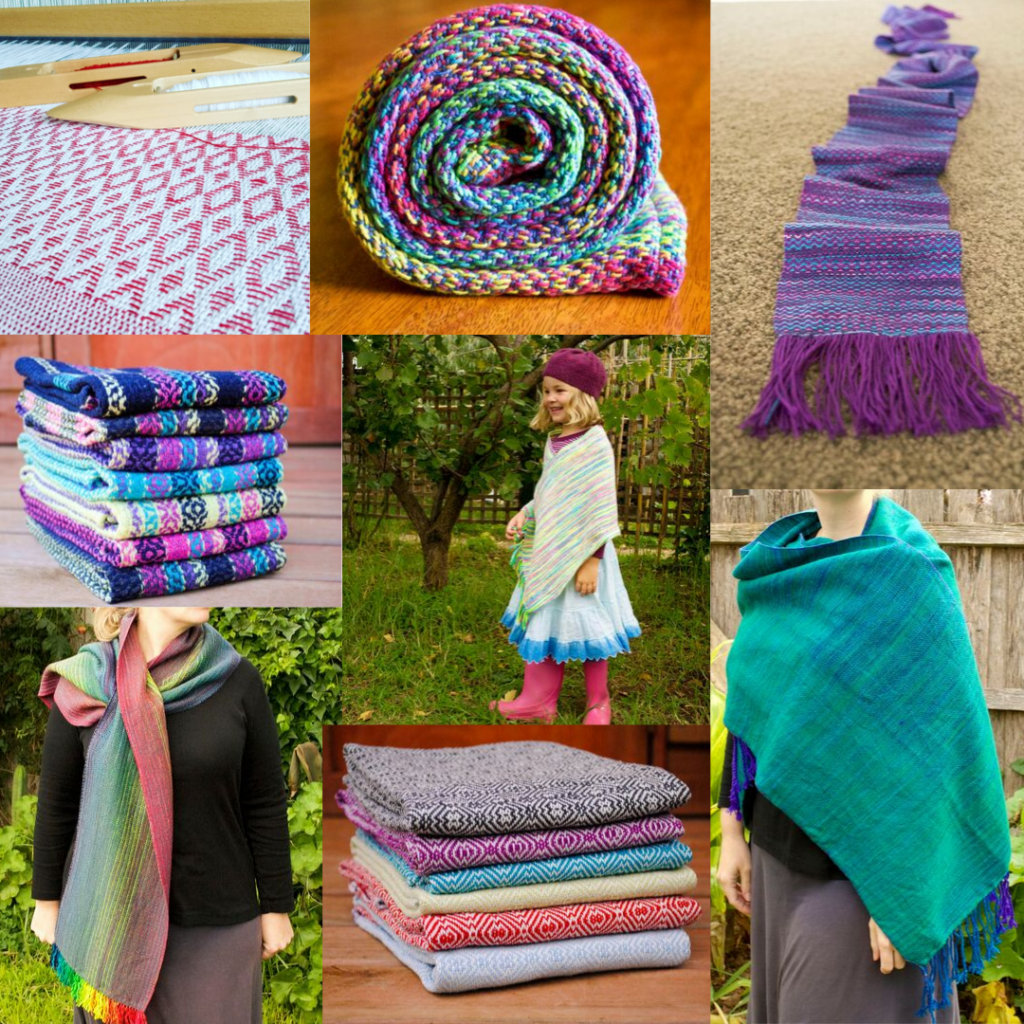

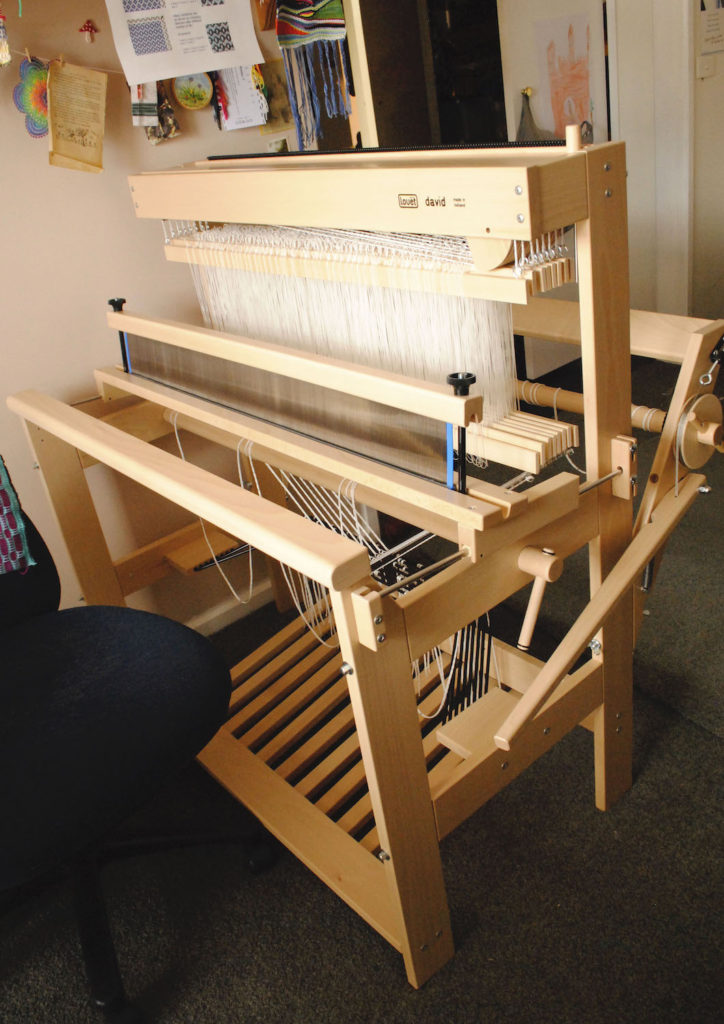
I have a 15 in cricket that I bought this last Christmas for myself, I love it but when I got to looking around the net for classes I found different classes and your weaving school which then opened up different things that I wanted to try. I then bought a 24 in Ashford rigid heddle loom with the two heddles. Will be making kitchen towels soon, did some krokbragd on it and saw your double weave class. I have since thought about a table loom and recently bought the 24 in 8 shaft loom with stand but still waiting for it to be delivered. I want to do some double weave blankets and a purse on that. I thought about and watched many of the things you said about looms and saw others commenting from the net. Looking forward to the table loom coming. Love your classes and explanations of how to do things. Thanks for all the guidance you give.
Wow Ellen, what an exciting time for you! Now you can have multiple projects on the go at one time 😊
I have a 16″ and a 24″ Ashford rigid heddle looms and they are both great. I’m thinking of/playing with the idea of a table loom. Ashford has the Brooklyn loom and says “designed to be an economical stepping-stone for rigid heddle weavers who are ready to expand their weaving skills and explore the wonderful world of multi-shaft weaving”. But Ashford also has a 4 shaft 16″ table loom. There are all sorts of articles about “shaft envy” and how to get more shafts, but I think I’d be fine with 4 for quite a while. I am confused. 🙂
Thanks for the Info!
Which size Ashford *Rigid Heddle Loom* (RHL) would be best for a beginner wanting to weave Shawls, Wraps, Table Linens & Tea Towels? I would prefer not to have to seam panels together, and not having to double weave would be a dream, but cost & space eventually come into the picture, so would a comfortable 24” RHL satisfy the weaver, or would the 32” RHL be more accommodating to the types of projects I’m interested in weaving. ($78 for upto 16” of doublewidth, not Including the Oversized Shipping Fees on items over 26”).
Maybe I need to rethink my Weaving Goals and take another look a Narrow Scarves. ; )
Thanks for any insight you can share!
I would usually say that a 24″ loom is wide enough for kitchen towels and narrowish shawls. If you want to weave bigger towels, blankets etc you may want to go bigger. So, it really comes down to analysing what you can see yourself weaving the most and make the decision from there 😊
Another consideration when going wider with a rigid heddle loom is the space required on each side to put the stick shuttle into the shed. I bought a 32” and it’s ok, but having a small living room I tend to clear it when the shuttle starts swinging around! Makes it quiet and I get the tv to myself especially when it’s warped full width, but it does limit how often I can use it….
That is an excellent point Dani, definitely an important one to consider.
Thank you so much for this post. I’m wondering if one can do doubleweave on a table loom? I have a 16 inch sampleit right now but am considering a 24 inch table loom and want to weave yardage. I’m also a new weaver with back problems so i especially appreciated your post! 😉
Renee, yes, you can do double width weaving on a table loom, but as a disclaimer I’ve not attempted it myself – something on my list of things to try!
I found your comments very interesting and informative. As I also have similar back problems I will stick with my 24 inch Ashford and stand.
I’m glad it was helpful to you Helen!
Thank you Kelly. This was informative and to the point. I enjoyed reading your post and it has made me think of new considerations that I had not thought of before – so thank you!
Matilda
Wonderful, thanks for reading!
These are the best explanations I have heard about the width of the looms. Thank you very much for the information.
I’m so glad to hear that, thank you Brigitte!
Thanks for this info. I bought a 10” SampleIt and I love it but have been thinking of going bigger for a while now. I have all the issues mentioned in your post, back injury, space limitations and a funding shortage. I will eventually be buying a bigger loom but will keep my little one as it’s so handy.
I have noticed that most weavers who start out on a Sampleit find that they want to upsize. I agree that it’s great to have a smaller and larger size – the Sampleit is so quick and easy to warp up for a sample or small project. And it takes up hardly any space at all!
Very informative, especially as I am new to weaving
That’s great to hear!